Youth Group Facilitator Guide
Choose activities from nine categories to add fun and learning to your youth group! Learning to Give, in partnership with the Council of Michigan Foundations, developed this set of activities to support youth philanthropy knowledge, skills, and action.
Some of the materials were developed in a project called Habits of the Heart: Strengthening the Traditions of Giving and Serving among Youth.
Getting to Know Philanthropy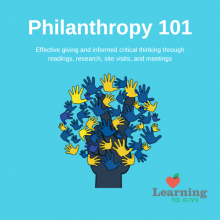
These activities build an understanding of the concepts of philanthropy.
Definitions and Teambuilding:
- Philanthropic Race with Time – This energizer activity provides a fast and fun way to learn about the word philanthropy and its meaning.
- ABCs of Philanthropic Action – This fast-paced brainstorming game defines and gives many examples of philanthropic actions.
- Common Good Candy Hunt – In this activity participants will recognize the importance of working together to serve the common good.
- Understanding Advocacy and Action (video) – Youth learn there are many ways to make a difference; and that they have the strength and power to give time, talent, or treasure for the common good.
- Time Equals Treasure - Participants discover how their time can equal dollars to help their community.
- Philanthropy Definition Interviews – Young people interview others to gather information about the understanding of the concept of philanthropy.
- Advisor Tool: Best Practices for Youth Engagement - These practical tips and tools increase youth involvement and show them you value their participation and perspective.
Philanthropy Concepts
- The History of U.S. Philanthropy - Through this timeline, young people learn about philanthropy through the causes they care about in the past, present, and future. The embedded questions and activities help youth see we all have something to give. This timeline displays our collective story of diverse people taking action to fight injustice and make a better world.
- The Youth Movement – In this activity youth survey the history of youth organizations in the 20th Century and see themselves in the timeline.
- Altruism: Positive and Negative Sides - This video clip and discussion guide challenges youth to consider how charity and altruism can be destructive to society or come from a self-serving perspective.
- White Papers - Written by graduate students in philanthropy, these papers are snapshots of significant concepts, people, and organizations related to philanthropy.
Group Norms
These guides and activities help groups work together with respect, purpose, and fun.
- Group Agreements - Help team members come to an agreement on how they will work together respectfully and effectively.
- One-Way, Two-Way Communication – In this building activity, youth practice listening and asking questions and using two-way communication.
- Our Effective Youth Group - In this activity, the group discusses what makes a strong youth council and determines what is important to them and their mission. They brainstorm ways to overcome barriers.
- Think About, Act On It, Stand For It – In this activity, participants learn an effective and thoughtful process for creating positive change.
- Philanthropy Team Power – In this energizer activity youth learn that the power of caring and sharing can be stronger when there is a team.
- Selecting a Community Project Based on Consensus - In this activity, participants learn about the process of reaching group consensus.
- Critical Conversations - This guide provides tips and resources about promoting respectful dialogue based on facts and seeking to understand and be understood rather than to win.
- Respectful Meetings - Boost youth engagement and leadership by taking time to build safety and belonging in meetings.
- Advisor Tool: Adultism to Adult Supported - This guide helps adults step back from management, using language that gives youth ownership and builds adults as allies who trust youth to lead.
Self in Community
Philanthropy is driven by passion and purpose. How do we gain awareness of those for ourselves and our group?
- Culturally Responsive SEL for Social Justice - These activities empower youth to discuss identity and social issues, and take generous action toward a socially just community.
- Take a Stand – This activity helps youth practice speaking up for issues they are passionate about and dialogue with others on the topic.
- SEL Identity Self-Portrait – In this activity, participants illustrate their visible and invisible identity markers, reflecting upon how they perceive themselves and how they are perceived by others.
- Map Your Heartbreak – This flexible group activity sparks great discussion and introspection. The first step to meaningful philanthropy is identifying things that really matter to us.
- Designing Your Philanthropy Collage – Youth create a collage visually depicting their philanthropic traits and actions.
- The Youth Movement – This activity shows where youth philanthropy shows up in history and helps youth find themselves in the timeline.
- Different Strokes for Different Folks – In this SEL activity young people are asked to consider how their race, ethnicity, gender, abilities, or sexuality impact how they interact with others.
- Everyday SEL Reflection Prompts – Use ice breakers to give youth a chance to listen, talk, reflect, build empathy, and discuss critical thinking and issues.
Diversity, Equity, and Inclusion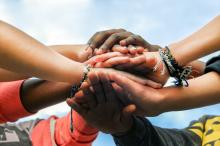
These activities prompt understanding and appreciation of diversity, equity, and inclusion and why awareness is important. In addition, youth learn to be more inclusive of others’ voices in meetings and group settings.
- Identity Self-Portrait - Great for youth and adults - participants illustrate their visible and invisible identity markers, then reflect upon how these identities interact with how they perceive themselves and how they are perceived by others.
- DEI Framework – In this activity, participants will gain an understanding of diversity, equity, and inclusion and construct a DEI framework for different aspects of their youth philanthropy group.
- Privilege for Sale - This activity encourages youth to discuss the power of privilege and how their perspectives, identity, and values influence their decisions.
- Privilege Circle - This activity introduces youth to the concept of privilege. Participants will become aware of their privilege and how their privilege enhances or hinders their access to opportunities.
- Everyday SEL Reflection Prompts - One of the most effective ways to support youth social-emotional growth is with regular check-ins. Use icebreakers to give youth a chance to listen, talk, reflect, build empathy, and discuss critical thinking and issues.
- Culturally Responsive SEL for Social Justice - These activities empower youth to discuss identity and social issues, and take generous action toward a socially just community.
- Recruiting for Diversity and Inclusion -
Grantmaking Process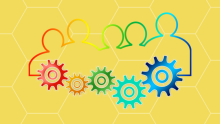
Make a difference through the grantmaking process! These activities teach skills and background information.
- Youth Grantmaking (paper) - This white paper, written by a graduate philanthropy student, details the history and impact of youth philanthropy.
- What Is Grantmaking? - This guide defines philanthropy, the nonprofit sector, foundations, and grantmaking and then explores the purpose and parts of the grantmaking process.
- Road Signs – In this activity, participants explore how to have productive board meetings using feedback in the form of process comments.
- Issues Consensus - In this activity, youth learn how to facilitate this type of decision-making and what it feels like to experience consensus building around community issues.
- Philanthropy Self-Evaluation – In this activity, participants learn how to note the changes their service and philanthropic actions have on them and their community.
- Endowment Apple Tree Analogy - Use this classic example to explain how an endowment is like an apple tree.
- Giving Circles - Ten Basic Steps to Starting a Giving Circle from the United Philanthropy Forum
Needs Assessment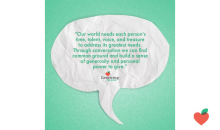
Grantmaking and service are more meaningful and effective when you know the research-based needs of your community.
- Connecting Skills and Interests to Community Needs (video) – Find out how to connect your passions with community needs in this video and discussion guide.
- Blue Sky Envisioning Activity – Select a meaningful issue that you deeply care about and visualize it being resolved. Then we can have conversations about first steps to take to get there.
- Using the News to Identify Needs – In this activity, youth perform a basic needs assessment by scanning the news and other community resources for issues and resources.
Funder-Grantee Relationships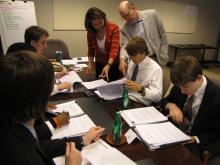
When a foundation gives money to help a nonprofit carry out its mission or project, the funder and grantee are helping each other make a difference for something they both care about. A healthy funder-grantee relationship is a partnership. Both need the other to do good.
- Open Doors to Your Community - Get to know the nonprofits that address the unique needs in your community.
- Funder-Grantee Relationships – (video guide) Because we are working together to address the community's needs, the funder-grantee relationship can be nurtured through visits and conversations from the idea stage to the evaluation.
- Evaluating Grantee Organizations – In this activity youth learn how to build stronger relationships with grantees and enhance the grantmaking process.
- Good Stuff Interviews – In this activity participants experience the appreciative inquiry approach of “looking at the good stuff in their organization and/or community.”
- Structured Introductions – This activity is part of the team-building process among board members and youth philanthropists.
- Demonstrate the Impact You've Made – Watch these videos to generate ideas for your youth philanthropy group to put together a video project that demonstrates their impact!
Growing Youth Philanthropy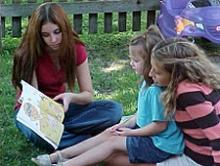
You love your philanthropy experience. How do we get more young people involved?
- Increasing Awareness of Philanthropy and YAC - This guide gives tips and tools for introducing others to philanthropy at local schools and through service.
- Literature Guides - We have combined selected literature with thought-provoking discussions and activities with themes of philanthropy. Use these to learn or teach younger children.
- Benefits of Engaging Youth in Philanthropy - This document shares benefits to your organization, community, and youth themselves.
- Service Sparks - These service project guides spark action, empathy, change, passion .... The guides help individuals or groups of young people of all ages make a difference with their time and talent.
- Recruiting for Diversity and Inclusion -
Service Projects and Community Issues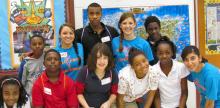
Your time, talent, treasure, ties, and testimony are valuable today!
- Four Types of Service - Youth action may be direct, indirect, advocacy, research, or a combination of these.
- Stages of Service Learning video - This lively whiteboard video outlines and describes the steps of service learning and inspires ways to take action in the community.
- What Is Advocacy? (video guide) - Advocacy is a form of philanthropy that changes hearts and minds. Youth share examples of advocacy related to issues they care about.
- How to Live Philanthropically (videos) – Youth learn philanthropy behaviors as part of life-long action. They reflect on what they can give and the difference they can make.
- Motivated to Give – This sorting activity explores the seven motivations for giving.
- How Much Would You Give? – This simulation helps youth participants make choices and determine how to best use financial resources to support a cause.
- Get to the Root – In this activity, participants use critical thinking to identify an issue, explore the root causes and effects, and research who the experts are.
- Service Sparks – These Service Sparks guides provide directions for generous actions that encourage youth voice and promote the common good.
- Issue Area Toolkits - These toolkits help youth dive deeply into and take action on specific issues they care about or have identified as areas of need in their community. Each toolkit includes background on the featured issue, community connections, project ideas, and planning guides.